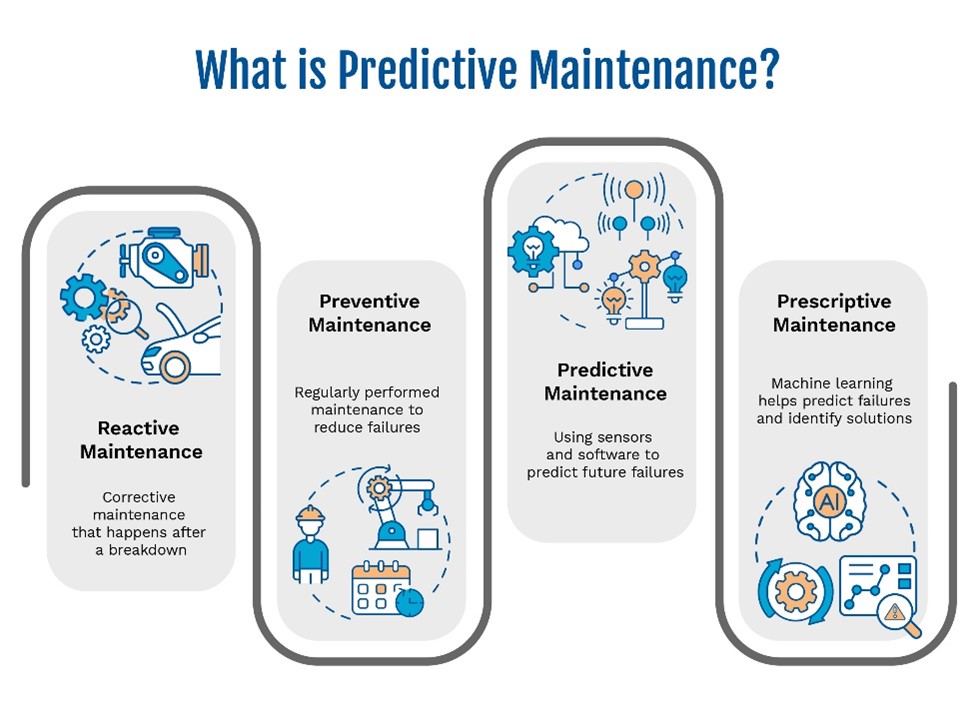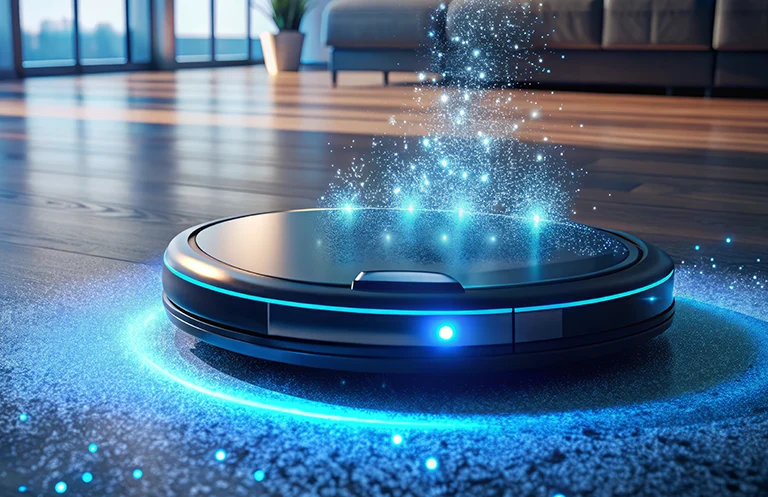‘Machines asking for their own maintenance’ is a dream come true for any company, especially which is driven by KPIs for efficiency, productivity, and uptime. Be it Manufacturing, Aerospace, Automotive or any other mission critical company, it is extremely important to ensure near-zero downtime, as it affects the business and financials, at the same time can be a big cause of concern for mission critical industries.
This is the very reason predictive maintenance is gaining increasing attention and importance across the industries. Based on the numbers from PRNewswire are quite evident of the fact as the predictive maintenance market is set to grow at a whopping 28.4% CAGR as per industry reports!
Predictive maintenance (PdM) is a technique that uses data analysis tools and techniques to detect anomalies in your operation and possible defects in equipment and processes so you can fix them before they result in failure. Ideally, predictive maintenance allows the maintenance frequency to be as low as possible to prevent unplanned reactive maintenance, without incurring costs associated with doing too much preventive maintenance.
There is a basic operational difference between Preventive Maintenance vs. Predictive Maintenance.
Preventive Maintenance activities are carried out when the machines are not operating or turned off and Predictive Maintenance tasks are the ones carried out while machines are running live.
Hence, it becomes extremely important for predictive maintenance solutions to be precise, accurate and quick to raise alerts while the live data is being captured and insights fed back in real-time.
Domain relevance
Though predictive maintenance is relevant across almost all the industries, the primary domains which will benefit the most from the successful adoption include the companies predominantly leveraging automotive sub-systems, industrial machinery, propulsion systems, electromechanical systems, energy generation equipment, and turbomachinery.

Benefits to the industries with KPI of minimum downtime and costly repairs
The above mentioned industries are anticipated to benefit the most from the emergence of real time analytics and predictive maintenance in more ways than listed below:
- Reduced operational downtime / enhanced availability
- Minimized recurring labor, materials and repair costs
- Improved safety and security
- Reduced secondary damage to other components in the system
The Future of Predictive Maintenance
There may be a few roadblocks to predictive maintenance program implementation still it remains an important part of maintenance. All manufacturers who can successfully tackle integration issues and automated processes can earn a major monetary and competitive advantage to remain relevant and functional in the future.
Top 7 Predictive Maintenance Innovation Trends for 2023
Artificial Intelligence
AI-driven predictive maintenance reduces the costs associated with unscheduled maintenance while ensuring worker safety. Industries leverage AI, machine learning, and deep learning to analyze massive real-time data and predict asset breakdowns by detecting systematic failure patterns. To examine equipment conditions, they collect data from in-machine sensors and past service records. Such solutions then inform operators about components that require potential maintenance or replacement.
Internet of Things
IoT in predictive maintenance leads to effective use of machines, optimized production, and improved safety processes. IoT-driven predictive maintenance enabling manufacturers to monitor existing assets in a centralized manner. Smart sensors help maintenance teams in gathering real-time information like operating temperature, supply voltage and vibration. This information is crucial to forecast machine failures and mitigate downtime.
Inspection Technologies
Systematic condition monitoring is a crucial part of predictive maintenance. It also facilitates the prevention of machine failures. Inspection technologies evaluate equipment degradation levels based on microcracks, corrosions, vibrations, temperature etc.
Digital Twins
Current technologies are inadequate to track the dynamic changing conditions of manufacturing operations and equipment thus, digital twins generate a virtual replica of physical equipment. This enables manufacturers to continuously monitor actual working conditions and accurately visualize future scenarios.
Predictive Analytics
Predictive analytics driven PdM solutions analyze unstructured data, such as sensor readings, past reports, and environmental parameters, to predict failures. As a result, startups and scaleups are developing analytical tools that synthesize data and cluster information.
Predictive Maintenance as a Service
Predictive maintenance as a service makes PdM accessible and affordable for manufacturing plants. To aid this, startups are offering cloud based PdMaaS solutions. They mitigate infrastructure costs and allow manufacturers to leverage existing components, further reducing costs. Such solutions also enable on-demand access to predictive maintenance and improve scalability.
Immersive Technologies
Startups are using extended reality (XR) to simplify asset inspections. Augmented reality (AR) and virtual reality (VR) platforms simplify on-site inspection, failure documentation, and paperwork follow-up. Through headsets and smart glasses, technicians can visualize historical component data, thereby accelerating in-situ diagnostics.

What is driving the trend?
The predictive maintenance trend is primarily fuelled by the advent of latest technologies such as:
- Edge computing / significantly improved on-board computing power: It is very important to have absolutely no lag in feeding back the analysis to take corrective actions while the machines / systems are in action and hence edge based solutions are driving predictive maintenance solutions
- IoT enablement for a connected ecosystem: With advancements in technology to capture and process data from multiple sensors, sensor data fusion and sophisticated server based analytics and dash-boarding has really been driving a truly connected industry with predictive maintenance
- Machine learning: Statistical analysis techniques powered by self-learning / deep learning algorithms use current and historical data and keep updating the same to get trained on the job to make predictions about impending failures with higher and higher accuracy with time
The components: A typical predictive maintenance solution would include a set of sensors to capture the live OT data, a database to have hordes of historical data that keeps getting updated, the ERP system and other IT systems interacting with the database, the AI/Predictive algorithms and finally web / desktop or mobile applications for dash-boarding, real-time alerts and suggested action.
Watch Our Webinar
Why IoT Needs to Build a Nexus between OT, IT, and Business – Challenges, Integration, and Use Cases
How does the stuff work?
The machinery data is continuously monitored using the sensors, which is then analyzed using real-time algorithms to detect anomalous behavior of the parameters to detect faults. The detailed analysis through tools such as Matlab / Simulink is carried out to categorize the data into more insightful manner for easier decision making. An example of the data categorization dashboard could include failure scenarios, method of detection, potential impact with timelines, and the action plan recommended.
Advanced prognosis demands a high processing power potential provided by GPUs and state of the art statistical analysis tools. Machine learning can also add up another dimension wherein a rigorous training can give surprisingly high accuracies with minimal human intervention.
DOWNLOAD CASE STUDY
Enabling Remote Monitoring & Predictive Maintenance of Warehouse Equipment
The idea is to understand the way a machinery works, various modes of failures and the changes in critical parameters to pre-empt the failure based on historical data. Once the data is available, it is fed into a simulated environment for develop and test algorithms, which can then be extended to the real-time scenarios. So typical KPIs of any such solutions include reliability, repeatability, predictability, accuracy, low system work load, timely automation data related to the outputs such as parameter threshold (higher and lower) alerts, faulty functioning or outputs alerts.
An example of the kind of dashboards could be a table containing failure scenarios, detection methods, key relevant data captured and a suggested action plan to prevent any damage or failure.
eInfochips has competency in deploying deep learning algorithms right from hardware selection to algorithm development to production support. These skillsets, when applied in tandem, do help clients minimize failures that often dent the businesses in terms of operating quality/functionality and on the balance sheets!
Reach out to our remote device management experts to know more.












